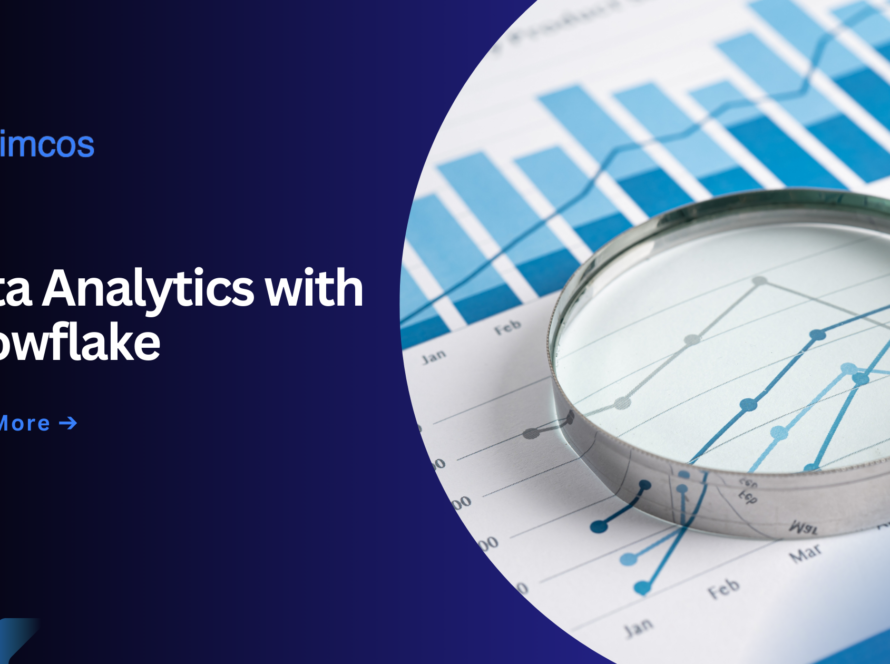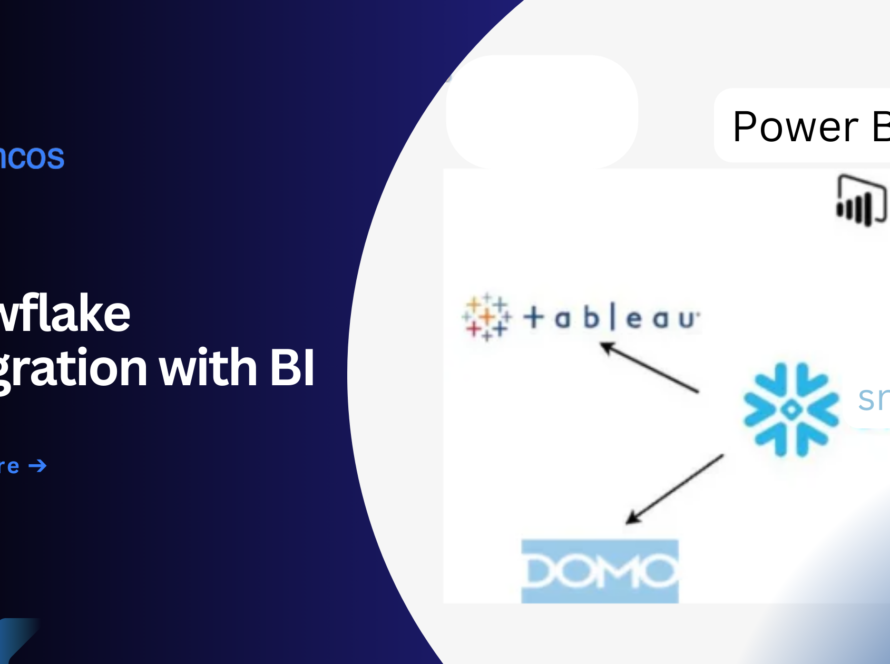The explosion of data over the last ten years has witnessed it. An important constituent, indeed, of a consumer’s life, data equally forms part of business world. Data is the king of the current business world. Businesses use data to connect with customers, improve products and make smart choices. They use more and more data to find ways to improve how they operate and it does not seem this trend will ever stop. Snowflake plays a very important role in this paradigm shift towards data-centricity in general and it gives businesses that platform which they require to manage and analyze big data with ease and efficiency.
Experts predict the amount of data created each year will be ten times higher in 2025 than it was in 2017! With an increase in the amount of data, companies need smarter ways to handle it all and need a way to understand it.
But there’s a challenge: Data is stored in many places, both online (cloud) and on company computers. This makes it difficult for many businesses to manage it. Cloud data warehouses are a new answer that’s easy to adjust, grows as needed and works super fast.
Table of Contents
What is a Data Warehouse?
A data warehouse, literally, refers to the company’s large garage for their data. Here is where one get data originating from the sales, marketing, as well as customer accounts. It is quite different from a daily transaction database in that it keeps historical data for the purpose of analysis. This hub thus lets businesses track trends to notice patterns; therefore, they are enabled to make better decisions more easily.
All these companies seek that latest way of storing and analyzing data and they go for Snowflake. It is a good choice to check out. A technology company offering cloud-based data warehouses for data storage and analysis, it makes businesses understand their data better and thus enables them to take better decisions.
This article shall discuss the Meaning, key features and the need for Snowflake in relation to data to understand why the company is such a craze.
What is Snowflake?
Snowflake is a cloud-based data storage and analysis company established in 2012 in San Mateo, California. Snowflake offers a data warehouse. A data Warehouse is described as a central filing cabinet for data, analyzed by companies to gain insights.
Snowflake is not a data warehouse; it is an all-in-one solution for your data requirements. It is used to store information (data warehousing), analyze enormous amounts (data lakes), build tools to work with (data engineering), utilize it to find trends (data science and even to create applications based on that data. All this is safely shared in real-time with others.

Features of Snowflake
This platform transforms the way data is managed. It offers cutting-edge features to streamline workflows for greater efficiency and empower more data-driven decisions. Some of the key features and how they help are listed below:
1. Automated Management
Snowflake automates workloads so that there is minimal administrative burden. Autoresume starts to compute clusters when in demand and hibernates idle ones, maximizing performance and cost. Auto-scaling changes automatically the number of clusters from 1 up to 10 according to the volume of queries and ensure smooth running in case of high user activity with different types of queries.
2. Effortless Concurrency
Unlike traditional data warehouses, where users compete for resources in Snowflake’s multi-cluster architecture, it does not suffer from concurrency issues, thus allowing for parallel processing and even better handling of heavy workloads. Even separate virtual warehouses could be created and assigned to specific functions or departments for improved workload management.
3. Getting Data
Snowflake simplifies data management by natively integrating with existing tools on any cloud platform, including AWS, Azure and Google Cloud. This centralizes the data ecosystem, making it easier to use familiar tools while harnessing the power of modern data warehousing.
4. Near-Zero Management
Forget about managing hardware or software. Snowflake is fully managed, so you don’t need to set up, install and configure anything. It even automates scaling and performance tuning, giving IT teams more time for strategic data initiatives and user enablement.
5. Instant Cloning
Need a copy of data for testing or historical analysis? Snowflake’s cloning feature creates a replica instantly without using extra storage space. This helps to work with different data versions without impacting performance or incurring additional storage costs. Ideal for tasks such as building test environments or running simulations or building reports on historical data.
6. Automatic Query Tuning
Stop wasting time on manual adjustments. The built-in query optimization engine in Snowflake autofine-tunes queries for large datasets. That means the delivery of fast results consistently, even for the most complex queries involving huge volumes of data. Analyze insights rather than wrestling with query performance.
7. Security
Snowflake considers the information safety high on its priority list. The data is protected with measures such as encryption, masking and granular access controls that are at the industrial level. Additionally, it has SOC 2 Type II compliance along with ensuring compliance at the highest level of security standards. Such an advanced framework works in locking up data to be guarded, which in turn makes customers feel comfortable using Snowflake for even the most confidential business information.

How is Snowflake helpful in Data Management?
It is a simplification of data management through Snowflake to businesses by offering a single, centralised cloud-based platform. The centralization of it offers all functionalities in a system encompassing data warehousing capabilities, functionalities of a data lake and sharing of data within a solution. Companies are no longer required to manage different systems for various requirements of data. Snowflake’s main strength lies in the fact that it is scalable and elastic; thus, users either increase or decrease resources on demand during workload. This simply means cost efficiency and proper management of data.
1. Faster Queries
Snowflake auto-partitions data based on the date and region. This boosts the performance of queries since it makes it possible for Snowflake to rapidly search for the desired data subset quickly. When you have a question relating to a particular time frame or area, Snowflake zooms in to the relevant data subset that proves helpful to businesses to make swift decisions.
2. Simplify Storage
It does away with the need for independent data warehouses and data lakes – it handle structured, semi-structured and unstructured data together. It simplifies data management and reduces total costs. For example, consolidation of all company’s information assets-including spreadsheets, customer records, social media data into a single, unified platform-will break down data silos. This means lower costs and a more collaborative data-driven culture.
3. Fresher Data
Snowflake allows doing micro-batch processing, thus breaking large data loads into smaller batches to be processed more frequently. This ensures always updated data to analyze in near real-time.
4. Easy Cloud use
Snowflake easily integrates with popular cloud data platforms such as AWS, Azure and GCP. This allows users to leverage existing cloud infrastructure for data management and analytics. This helps to leverage investments made in the cloud for data management and analytics. So, no rip-and-replace is required, Snowflake works wherever the data already lives.
5. Data Cloning
Snowflake creates an instantaneous copy without consuming any additional storage space. This enables working with different versions of data without influencing performance or consuming extra space for storage. This comes in handy especially during such activities as creating test environments, running simulations, or developing reports on historical data.
6. Lineage Tracking
Snowflake tracks and captures the source and alteration of data throughout the data lifecycle. In this way, it does simplify how data has been processed or modified in order to be able to actually assure data quality as well as help debug. And it maintains data in its integrity, which diminishes complexity associated with compliance activities such as audits.

How does Snowflake benefit businesses?
Snowflake stores all the data the company has in one safe place on the cloud. It breaks down the data barrier and lets everyone access what they need. One pays only for what is used; it is, thus, cost-effective. This helps businesses make smarter choices based on real information.
1. Data Loading
In place of complex uploads, Snowflake’s Snowpipe service fetches data from external storage like S3 and Azure Blob at near-high speeds, feeding directly into the system for real-time analysis.
2. Actionable Analytics
Data is translated into insights. Snowflake uses interactivity and advanced analytics tools to enable businesses to understand their data. It works smoothly with QuickSight and other popular BI platforms, providing the complete picture.
3. Data Sharing
Free collaboration. With its use of Snowflake Marketplace, organizations are able to share and access data resources across other organizations in a safe and straightforward manner. Authentic, verified data implies quality and safety and, therefore facilitates business discovery of necessary information on time.
4. Machine Learning
It helps in building powerful models by allowing data scientists to work directly in the environment. It handle large datasets, connects to popular frameworks and integrates with Apache Spark for easier model creation.
Snowflake is also a centralized cloud platform for data storage, analysis and sharing, providing easier data management through features like auto-scaling, instant cloning and security. Businesses gain faster insights, improve data freshness and collaborate effectively with Snowflake.

How does Himcos help?
Himcos implements a data warehouse, Snowflake which empowers us to build organized datasets, data warehouses and data pipelines, all with the help of Snowflake. This facilitates better data-driven decision-making for businesses seeking this service.



